Resident Crews of the International Space Station (ISS)
![]()
ISS: Expedition 65 |
 |
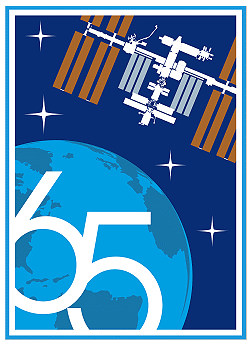 |
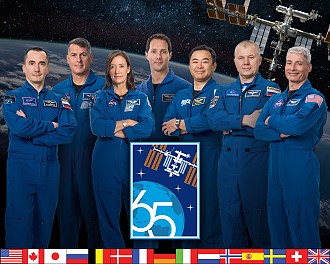 |
crew poster |
|
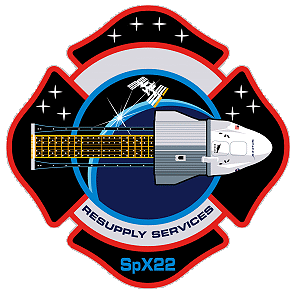 |
 |
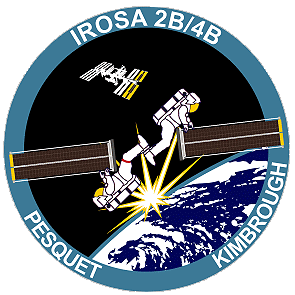 |
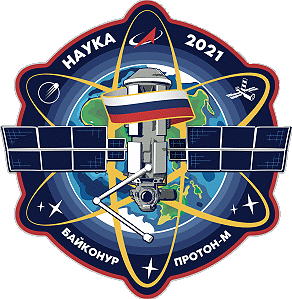 |
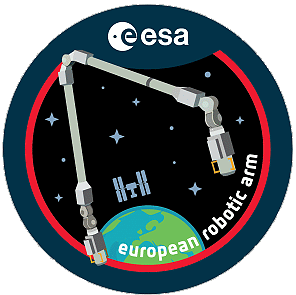 |
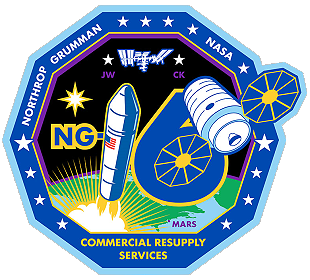 |
 |
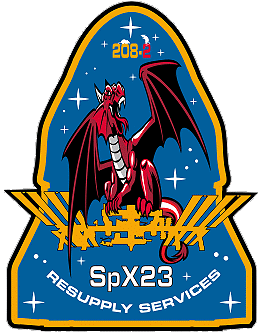 |
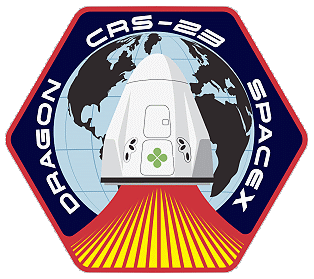 |
![]()
Crew, launch- and landing data
| No. | Nation | Surname | Given names | Position | Spacecraft (launch) |
Launch date |
Launch time |
Spacecraft (landing) |
Landing date |
Landing time |
Mission duration |
Orbits |
| 1 | Walker | Shannon | ISS-CDR | SpaceX Crew-1 | 16.11.2020 | 00:27:17.483 UTC | SpaceX Crew-1 | 02.05.2021 | 06:56:43 UTC | 167d 06h 29m 26s | 2688 | |
| 2 | Hopkins | Michael Scott | Flight Engineer-10 | SpaceX Crew-1 | 16.11.2020 | 00:27:17.483 UTC | SpaceX Crew-1 | 02.05.2021 | 06:56:43 UTC | 167d 06h 29m 26s | 2688 | |
| 3 | Glover | Victor Jerome | Flight Engineer-11 | SpaceX Crew-1 | 16.11.2020 | 00:27:17.483 UTC | SpaceX Crew-1 | 02.05.2021 | 06:56:43 UTC | 167d 06h 29m 26s | 2688 | |
| 4 | Noguchi | Soichi | Flight Engineer-12 | SpaceX Crew-1 | 16.11.2020 | 00:27:17.483 UTC | SpaceX Crew-1 | 02.05.2021 | 06:56:43 UTC | 167d 06h 29m 26s | 2688 | |
| 5 | Novitsky | Oleg Viktorovich | Flight Engineer-4 | Soyuz MS-18 | 09.04.2021 | 07:42:40.496 UTC | Soyuz MS-18 | 17.10.2021 | 04:35:30.3 UTC | 190d 20h 52m 50s | 3056 | |
| 6 | Dubrov | Pyotr Valerievich | Flight Engineer-5 | Soyuz MS-18 | 09.04.2021 | 07:42:40.496 UTC | Soyuz MS-19 | 30.03.2022 | 11:28:01.2 UTC | 355d 03h 45m 21s | 5680 | |
| 7 | Vande Hei | Mark Thomas | Flight Engineer-6 | Soyuz MS-18 | 09.04.2021 | 07:42:40.496 UTC | Soyuz MS-19 | 30.03.2022 | 11:28:01.2 UTC | 355d 03h 45m 21s | 5680 | |
| 8 | Kimbrough | Robert Shane | Flight Engineer-14 | SpaceX Crew-2 | 23.04.2021 | 09:49:02.397 UTC | SpaceX Crew-2 | 09 11.2021 | 03:33:15 UTC | 199d 17h 44m 13s | 3194 | |
| 9 | McArthur | Katherine Megan | Flight Engineer-15 | SpaceX Crew-2 | 23.04.2021 | 09:49:02.397 UTC | SpaceX Crew-2 | 09 11.2021 | 03:33:15 UTC | 199d 17h 44m 13s | 3194 | |
| 10 | Hoshide | Akihiko | ISS-CDR * | SpaceX Crew-2 | 23.04.2021 | 09:49:02.397 UTC | SpaceX Crew-2 | 09 11.2021 | 03:33:15 UTC | 199d 17h 44m 13s | 3194 | |
| 11 | Pesquet | Thomas Gautier | ISS-CDR ** | SpaceX Crew-2 | 23.04.2021 | 09:49:02.397 UTC | SpaceX Crew-2 | 09 11.2021 | 03:33:15 UTC | 199d 17h 44m 13s | 3194 | |
| 12 | Shkaplerov | Anton Nikolayevich | Flight Engineer-? | Soyuz MS-19 | 05.10.2021 | 08:55:02.442 UTC | Soyuz MS-19 | 30.03.2022 | 11:28:01.2 UTC | 176d 02h 32m 59s | 2712 |
* since April 27, 2021 Akihiko Hoshide replaced Shannon Walker as ISS-CDR
** since October 04, 2021 Thomas Pesquet replaced Akihiko Hoshide as ISS-CDR
unofficial Backup Crew
| No. | Nation | Surname | Given names | Position |
| 1 | ISS-CDR | |||
| 2 / 3 | Lindgren | Kjell Norwood | Flight Engineer | |
| 4 | Hoshide (?) | Akihiko | Flight Engineer | |
| 5 | Shkaplerov | Anton Nikolayevich | Flight Engineer | |
| 6 | Artemyev | Oleg Germanovich | Flight Engineer | |
| 7 | McClain | Anne Charlotte "Annimal" | Flight Engineer | |
| 8 | ? | Flight Engineer | ||
| 9 | ? | Flight Engineer | ||
| 10 | ? | Flight Engineer | ||
| 11 | Maurer | Matthias Josef | Flight Engineer |
 |
Expedition Report
|
ISS Expedition 65 began with the undocking of Russian
spacecraft Soyuz
MS-17 on April 17, 2021 at 01:34:04
UTC. The landing crew consisted of Sergei
Ryzhikov, Sergei
Kud-Sverchkov and Kathleen
Rubins. Three-and-a-half-hours later the crew landed safely
in Kazakhstan. So, the new Expedition 65 consisted of
ISS Commander Shannon
Walker, Michael
Hopkins, Victor
Glover, Soichi
Noguchi, Oleg
Novitsky, Pyotr
Dubrov and Mark
Vande
Hei. The SpaceX Crew-2 mission launched on April 23, 2021 from Launch Complex 39A at NASA's Kennedy Space Center in Florida. This is the second crew rotation flight of the SpaceX Crew Dragon spacecraft on a Falcon 9 rocket following certification by NASA for regular flights to the space station as part of the agency's Commercial Crew Program. It is the first manned flight with a used spacecraft. Endeavour flew the first time on mission Crew Dragon SpX-DM2. The SpaceX Crew-2 Endeavour carried Crew Dragon Commander Shane Kimbrough, Pilot Megan McArthur, Mission Specialist Akihiko Hoshide from Japan Aerospace Exploration Agency (JAXA) and Mission Specialist Thomas Pesquet from ESA to the space station for a six-month science mission. The Crew Dragon docked to the International Space Station on April 24, 2021. The US astronaut Shannon Walker Walker passed on command of the International Space Station to the Japanese astronaut Akihiko Hoshide on April 27, 2021. The record-breaking orbital mission of the cargo spacecraft Progress MS-14, which will go on for more than a year, is coming to an end. Usually with the International Space Station's own flight program on April 27, 2021 at 23:11:38 UTC, Progress MS-14 undocked from the Zvezda module of the ISS Russian segments. The cargo ship's propulsion system fired on April 29, 2021 at 00:01:28 UTC. After four minutes it shut down and the ship continued its descent. In accordance with the calculated data of the MCC specialists at 00:34:23 UTC, Progress MS-14 entered the dense layers of the earth's atmosphere. The fall of the ship's non-combustible structural elements occurred in the non-navigable area of the Pacific Ocean, 3,150 km from the city of Wellington and 7,390 km from the city of Santiago. On May 02, 2021 at 00:3:58 UTC, SpaceX Crew-1 Endeavour undocked from the International Space Station with astronauts Michael Hopkins, Victor Glover, Soichi Noguchi and Shannon Walker on board and splashed down at 06:56:45 UTC that same day south of Panama City / Florida. On May 20, 2021 an ISS reboost was performed using Progress MS-16 thrusters. This reboost was to set up for the launch of manned spacecraft Soyuz MS-19. The engines started at 17:01 UTC and fired 180.7 seconds. After the corrective maneuver, the average orbit of the ISS increased by 450 meters. The actual parameters are 417.66 km x 438.13 km. The ISS needs 92.906 minutes for each orbit. On June 02, 2021 Oleg Novitsky and Pyotr Dubrov performed a spacewalk (7h 19m). The duo emerged from the Poisk module on the space-facing side of the Zvezda service module. The cosmonauts prepared Pirs for removal from its port by the uncrewed Progress MS-16 cargo ship on the Earth-facing side of Zvezda, clearing the way for the arrival of the new Russian Multi-Purpose Laboratory Module named "Nauka", which is Russian for "science." The undocking of Pirs is scheduled for summer 2021, about two days after Nauka launches from the Baikonur Cosmodrome in Kazakhstan. In addition, they replaced the replaceable panel of the fluid flow regulator of the thermal regime of the functional cargo block (FGB) and they installed the necessary equipment for scientific space experiments "Test" and "Endurance" on the outer surface of the Poisk module. SpaceX's 22nd Commercial Resupply Services mission - the second cargo resupply mission on the company's upgraded version of its Dragon spacecraft launched on June 03, 2021 at 17:29:17 UTC on a Falcon 9 rocket from Launch Complex 39A at NASA's Kennedy Space Center in Florida. Dragon carried research, logistics and hardware for the Expedition 65/66 crew including: Tardigrades (Cell Science-04) - commonly called water bears - to examine how they adapt to conditions in low-Earth orbit, which could advance understanding of the stress factors affecting humans in space; Cotton plants (TICTOC; Targeting Improved Cotton Through On-orbit Cultivation) to study the stress of microgravity and evaluate effects on growth and root behavior. This investigation, funded by the retail chain Target, seeks to better understand the genetics involved in root system development, which could lead to the production of cotton plants that use water more efficiently on Earth; Bobtail squid (ADSEP-UMAMI; Understanding of Microgravity on Animal-Microbe Interactions) as a model to examine the effects of spaceflight on interactions between beneficial microbes and their animal hosts; Portable ultrasound technology (Butterfly IQ) that could provide important medical capabilities for future exploration missions beyond low-Earth orbit; and The first private-sector oral health care investigation on the ISS. This project, funded by Colgate-Palmolive, aims to identify the molecular characteristics of a healthy and diseased oral microbiome (a microbial community composed of different bacterial species) by cultivating oral bacterial biofilms growing on an enamel-type surface. Dragon's unpressurized trunk section delivers the first two of six new roll-out solar arrays based on a design tested on the space station in 2017. A robotic arm will extract them and astronauts will install them during a series of spacewalks summer 2021. About 12 minutes after launch, Dragon separated from the Falcon 9 rocket's second stage and began a carefully choreographed series of thruster firings to reach the space station. Arrival to the space station was on June 05, 2021 at 09:09 UTC. Dragon autonomously docked to the station's Harmony module with Expedition 65 Flight Engineers Shane Kimbrough and Megan McArthur monitoring operations. Thomas Pesquet and Shane Kimbrough left the space station on June 16, 2021 to perform an EVA (7h 15m). They installed the first array on the far end of the left (port) side of the station's backbone truss structure (P6) to upgrade the 2B power channel. They were not able to unfold the new solar array. In total it is planned six ISS Roll-Out Solar Arrays (IROSAs) to ultimately upgrade six of the station's eight power channels. The solar arrays arrived at the station in the SpaceX Dragon SpX-22 cargo spacecraft as part of the company's 22nd commercial resupply services mission to the station. Operators in the Mission Control Center at Johnson Space Center used the station's robotic Canadarm2 to extract the solar arrays from Dragon's trunk on June 10, 2021 in advance of installation during the spacewalks. Canadarm2 was used to maneuver the arrays into place, commanded from inside the station by Megan McArthur with Mark Vande Hei serving as backup. The current solar arrays are functioning well but have begun to show signs of degradation, as expected, since they were designed for a 15-year service life. The first pair of the space station's original solar arrays were deployed in December 2000 and have been powering the station for more than 20 years. The new solar arrays will be positioned in front of six of the current arrays, increasing the station's total available power from 160 kilowatts to a maximum of 215 kilowatts. The same solar array design will be used to power elements of the agency's Gateway lunar outpost. The second spacewalk of Thomas Pesquet and Shane Kimbrough followed on June, 20 2021 (6h 28m). The duo worked on the far end of the left (port) side of the station's backbone truss structure (P6) to deploy, or unroll, the first of two ISS Roll Out Solar Arrays (IROSAs) that will augment power capability for the port 6 truss' 2B power channel. Before the new array can be deployed and begin providing power to the orbiting laboratory, the two needed to install the electrical cables and drive the final two bolts to enable the solar array to unroll it into its fully laid-out position. On June 24, 2021 an ISS reboost was performed using Progress MS-16 thrusters. This reboost was to set up for the launch of manned spacecraft Soyuz MS-19 and the landing of Soyuz MS-18. The engines started at 08:40 UTC and fired 466 seconds. After the corrective maneuver, the average orbit of the ISS was at 420.28 km. The actual parameters are 419.71 km x 439.66 km. The ISS needs 92.92 minutes for each orbit. In this series Thomas Pesquet and Shane Kimbrough performed a third EVA on June 25, 2021 (6h 45m). During the spacewalk, Thomas Pesquet secured himself to the end of the station's robotic Canadarm2 then grasp the IROSA. Operating from inside the station, Megan McArthur, with Mark Vande Hei serving as backup, commanded the robotic arm to maneuver Thomas Pesquet and the array as close as possible to the installation location. The spacewalkers installed the second solar array to upgrade the 4B power channel on the P6 truss. Northrop Grumman's uncrewed Cygnus NG-15 spacecraft departed the International Space Station on June 29, 2021, more than four months after delivering nearly 8,000 pounds (3,630 kg) of supplies, scientific investigations, commercial products, hardware, and other cargo to the orbital laboratory. Northrop Grumman named the spacecraft after NASA mathematician Katherine Johnson, a Black woman broke through barriers of gender and race, calculating orbital mechanics for some of the first U.S. human spaceflights. Flight controllers on the ground sent commands for the space station's Canadarm2 robotic arm to detach Cygnus from the Unity module's Earth-facing port. The arm then maneuvered the spacecraft into position and released it at 16:32 UTC. Megan McArthur monitored Cygnus' systems upon its departure from the space station. After departure, Cygnus deployed two cube satellites: the Ionosphere Thermosphere Scanning Photometer for Ion-Neutral Studies (IT-SPINS), which will add to researchers' fundamental understanding of Earth's Ionosphere, and the Khalifa University Students Satellite-2 (MYSat-2), which will train graduate students through the development and evaluation of its software. Cygnus then performed a deorbit engine firing to set up a destructive re-entry in which the spacecraft, filled with waste the space station crew packed, burned up in Earth's atmosphere. The launch of the unpiloted Russian Progress MS-17 occurred on June 29, 2021 at 23:27:20.324 UTC from the Baikonur Cosmodrome in Kazakhstan. The freighter delivers almost two-and-half tons material. It transports 1,390 kg of tank fuel, 420 liters of drinking water for the Rodnik system and 40 kg of compressed gases with its own nitrogen reserves as well as around 1,509 kg, space experimentation, medical inspection and hygiene and hygiene items, clothing, standard food rations and good food for the crew members of this expedition. The Progress MS-17 spacecraft docked to the Poisk module at the Russian segment on July 02, 2021 at 00:59:41 UTC. Progress MS-17 will remain docked at the station for five months before departing in November 2021 for its deorbit into Earth's atmosphere. NASA's SpaceX Dragon SpX-22 or CRS-22 cargo freighter, loaded with approximately 5,000 pounds (2,267 kg) of scientific experiments and other cargo from the International Space Station, departed on July 08, 2021, bound for a splashdown in the Gulf of Mexico on July 10, 2021, completing the company's 22nd commercial resupply services mission for NASA. Ground controllers at SpaceX in Hawthorne, California, commanded Dragon to undock from the space-facing port on the station's Harmony module at 14:45 UTC, with Shane Kimbrough monitoring aboard the station. The cargo craft physically separated from the station five minutes later before firing its thrusters to move a safe distance away prior to a deorbit burn that will begin its re-entry into Earth's atmosphere. Dragon made its parachute-assisted splashdown around 03:29 UTC on July 10, 2021. Splashing down off the coast of Florida enables quick transportation of the science aboard the capsule to NASA's Space Station Processing Facility at the agency's Kennedy Space Center in Florida, and back into the hands of the researchers. This shorter transportation timeframe allows researchers to collect data with minimal sample exposure to gravity. Some of the scientific investigations Dragon returned to Earth include: Lyophilization-2 examines how gravity affects freeze-dried materials and could result in improved freeze-drying processes for pharmaceutical and other industries. Freeze-drying also has potential use for long-term storage of medications and other resources on future exploration missions. Molecular Muscle Experiment-2 tests a series of drugs to see whether they can improve health in space, possibly leading to new therapeutic targets for examination on Earth. Oral Biofilms in Space studies how gravity affects the structure, composition, and activity of oral bacteria in the presence of common oral care agents. Findings could support development of novel treatments to fight oral diseases such as cavities, gingivitis, and periodontitis. SpaceX Crew-2 astronauts on the International Space Station relocated their Crew Dragon Endeavour spacecraft July 21, 2021 setting the stage for a historic first when two different U.S. commercial spacecraft built for crew will be docked to the microgravity laboratory at the same time. Shane Kimbrough, Megan McArthur, Akihiko Hoshide, and Thomas Pesquet boarded the Crew Dragon spacecraft about 08:30 UTC and undocked from the forward port of the station's Harmony module at 10:45 UTC. The spacecraft docked again at the station's space-facing port at 11:35 UTC. The relocation will free up Harmony's forward port for the docking of Boeing's CST-100 Starliner spacecraft, scheduled for launch on July 30, 2021 as part of NASA's Boeing Orbital Flight Test-2 (OFT-2) mission. The flight will test the end-to-end capabilities of Starliner from launch to docking, atmospheric re-entry, and a desert landing in the western United States. The uncrewed mission will provide valuable data about Boeing's crew transportation system, and help NASA certify Starliner and the United Launch Alliance Atlas V rocket for regular flights with astronauts to and from the space station. This was the second port relocation of a manned Crew Dragon spacecraft. The uncrewed Multipurpose Laboratory Module (MLM), named Nauka, the Russian word for "science", was launched at 14:58:24.938 UTC on July 21, 2021 on a three-stage Proton-M rocket from the Baikonur Cosmodrome in Kazakhstan. The European Robotic Arm (ERA) was launched to the International Space Station together with the Russian Multipurpose Laboratory Module, called 'Nauka'. ERA is the first robot able to 'walk' around the Russian segment of the Space Station. It has the ability to anchor itself to the Station and move back and forward by itself, hand-over-hand between fixed base-points. This 11-meter intelligent space robot will serve as main manipulator on the Russian part of the Space Station, assisting the astronauts during spacewalks. The robot arm can help install, deploy and replace elements in outer space. Five days later after troubleshooting, on July 26, 2021 the uncrewed Progress MS-16 spacecraft undocked from the Russian segment of the station while attached to the Pirs docking compartment. With Pirs attached, Progress MS-16 undocked at 10:55:33 UTC. A few hours later, Progress' engines fired in a deorbit maneuver to send the cargo craft and Pirs into a destructive reentry in the Earth's atmosphere over the Pacific Ocean (14:51:40 UTC). After Nauka completes eight days in free-flight to allow Russian flight controllers to evaluate its systems, the 43-foot (13.1 meters) long, 23-ton module was manually by TORU system linked up to the port on the Earth-facing side of the Russian segment station, vacated by the departure of Pirs. Docking occurred at 13:29:06 UTC on July 29. 2021. Nauka will serve as a new science facility, docking port, and spacewalk airlock for future operations. Pirs has been part of the space station since September 2001, functioning as a docking port for Russian visiting spacecraft and an airlock for Russian spacewalks. MLM Nauka consists of an instrument-pressurized compartment and a spherical pressurized adapter, separated by a sealed bulkhead with a hatch. The instrument-pressurized compartment, equipped with an active hybrid docking unit, includes an instrumentation area, a cargo storage area and a living area with an onboard workshop and an additional cabin. The outer surface of the compartment houses the propulsion units with fuel tanks, two steerable solar panels and universal platforms for mounting mission equipment. The pressurized adapter is designed to accommodate the service equipment of the station systems. It is equipped with an axial docking assembly of a passive docking system and a nadir assembly of an active hybrid docking system. Northrop Grumman launched its 16th resupply mission to the International Space Station on August 10, 2021 at 22:01:09.300 UTC from NASA's Wallops Flight Facility on Wallops Island. Loaded with more than 8,200 pounds (3,720 kilograms) of research, crew supplies, and hardware, Northrop Grumman's Cygnus NG-16 cargo spacecraft launched on the company's Antares rocket. The Cygnus spacecraft got the name SS Ellison Onizuka. Highlights of space station research facilitated by this mission are: The Redwire Regolith Print study, which demonstrates 3D printing in space using a material simulating rock and soil found on the surfaces of planetary bodies, such as the Moon. Blob, an ESA (European Space Agency) investigation, which will allow students to see how slime molds' behavior is affected by microgravity. Capsules, which will deploy when Cygnus re-enters the atmosphere and transmit data to test an affordable thermal protection system, also known as a heat shield. A new spacecraft carbon dioxide removal technology that could help future explorers on the Moon and Mars breathe more easily. Cygnus also carried a new mounting bracket that astronauts will attach to the port side of the station's backbone truss during a spacewalk planned for late August 2021. The mounting bracket will enable the installation of one of the next pair of new solar arrays at a later date. The Cygnus spacecraft, dubbed the SS Ellison Onizuka in honor of the first Asian American astronaut, arrived at the space station on August 12, 2021. At 10:07 UTC, Megan McArthur captured Cygnus with the station's robotic arm, and Thomas Pesquet supported her. After Cygnus capture, mission control in Houston sent ground commands for the station's arm to rotate and install the cargo spacecraft on the Earth-facing port of the station's Unity module (13:42 UTC). On August 21, 2021 an ISS reboost was performed using Zvezda thrusters. This reboost was to set up for the launch of manned spacecraft Soyuz MS-19. The engines started at 04:04 UTC and fired 50 seconds. The actual parameters are 420.56 km x 437.09 km. The ISS needs 92.93 minutes for each orbit. NASA commercial cargo provider SpaceX launched on August 29, 2021 at 07:14:49 UTC its 23rd commercial resupply services mission to the International Space Station. Liftoff occurred from Launch Complex 39A at the agency's Kennedy Space Center in Florida. SpaceX's Dragon SpX-23 or CRS-23 spacecraft delivers new science investigations, supplies, and equipment for the international crew. Dragon delivers a variety of NASA investigations, including one that will determine if metabolites from grape skins and seeds used in wine making could help prevent and treat osteoporosis. A new robotic arm scheduled for demonstration could reveal potential uses on Earth, including in disaster relief. Another experiment will test an implantable, remote-controlled drug delivery system that will utilize a new research facility aboard the orbiting laboratory. Several Girl Scouts' experiments also will use this new facility to study plants, ants, and brine shrimp in microgravity. About 12 minutes after launch, Dragon separated from the Falcon 9 rocket's second stage and began a carefully choreographed series of thruster firings to reach the space station. Arrival to the station was on August 30, 2021. Dragon autonomously docked at 14:30 UTC to the forward-facing port of the station's Harmony module, with Expedition 65 Flight Engineers Shane Kimbrough and Megan McArthur monitoring operations. The spacecraft is expected to spend about a month attached to the orbiting outpost before it returns to Earth with research and return cargo, splashing down off the coast of Florida. On September 03, 2021 Oleg Novitsky and Pyotr Dubrov performed a spacewalk (7h 54m) to conduct the first pair of up to 11 spacewalks to prepare the new Nauka multipurpose laboratory module for operations in space. Oleg Novitsky and Pyotr Dubrov exited the Poisk module on the space-facing side of the station's Russian segment. The cosmonauts worked on external outfitting for the newly-docked Nauka MLM-U module. The work included the routing of cable connections to the MLM-U Nauka, the installation of handrails on the MLM-U Nauka and the laying of an Ethernet cable between Nauka and Zvezda. The next spacewalk occurred on September 09, 2021 (7h 25m). Oleg Novitsky and Pyotr Dubrov completed the external outfitting of Nauka. They finished the laying out of power and data cables between Nauka and the Zvezda Service Module. On September 11, 2021 an ISS reboost was performed using Zvezda thrusters. This reboost was to set up for the launch of manned spacecraft Soyuz MS-19 and the landing of Soyuz MS-18. The engines started at 18:54 UTC and fired 31 seconds. The actual parameters are 419.51 km x 439.45 km. The ISS needs 92.94 minutes for each orbit. Akihiko Hoshide and Thomas Pesquet left the ISS through the Quest Airlock on September 12, 2021 for another EVA (6h 54m). They installed a support bracket, called a modification kit, on the inward port side of the station's backbone truss structure in a position known as P4, which is closest to the station's pressurized living space. The kit prepares the site for future installation and deployment of the third of six new International Space Station Roll-Out Solar Arrays (IROSA) to upgrade one of the station's eight power channels known as 4A, which provides partial power to the U.S. Laboratory, the Harmony module, and the Columbus module. The modification kit was attached to the mast canister at the base of the original solar arrays. The crew also replaced a device that measures the electrical charging potential of the arrays and associated surfaces in its vicinity, called a floating point measurement unit, on a separate truss. The spacewalk follows three other recent ones to install the first pair of new IROSA arrays. On September 24, 2021 an ISS reboost was performed using Zvezda thrusters. This deboost was to set up for the launch of manned spacecraft Soyuz MS-19 and the landing of Soyuz MS-18. The engines started at 14:38 UTC and fired 47.5 seconds. After the corrective maneuver, the average orbit of the ISS decreased by 1,200 meters. The actual parameters are 417.33 km x 438.83 km. The ISS needs 92.91 minutes for each orbit. On September 28, 2021 Soyuz MS-18 was reconnected from the Rassvet module to the newly arrived multi-purpose laboratory module Nauka. The docking was carried out in manual mode by the commander of the spaceship Oleg Novitsky, with the participation of Pyotr Dubrov and Mark Vande Hei. This operation was necessary to release the docking node of the Rassvet module, to which Soyuz MS-19 is to dock on October 05, 2021, as well as to check the functionality of the docking equipment of the multipurpose laboratory. For this purpose, the manned spacecraft Soyuz MS-18 and then the cargo vehicle Progress MS-17 will be relocated to Nauka. The aim is to prepare the International Space Station to receive the new Prichal node module. At the docking node of the Nauka module there is a special adapter (ring pad) that enables the docking of the Russian spacecrafts Soyuz MS and Progress MS. After the Soyuz MS-18 has been undocked, the Progress MS-17 will be relocated and then take this "intermediate adapter" with when disconnecting and release the original docking adapter. This then clears the way for the platform knot. After a two-stage test, the Prichal module will be docked at the docking node after its launch at the end of November 2021. NASA's SpaceX Dragon SpX-23 or CRS-23 cargo freighter, loaded with approximately 4,600 pounds (2,086 kg) of scientific experiments and other cargo from the International Space Station, departed on September 30, 2021, bound for a splashdown in the Gulf of Mexico on October 01, 2021, completing the company's 23nd commercial resupply services mission for NASA. Ground controllers at SpaceX in Hawthorne, California, commanded Dragon to undock from the space-facing port on the station's Harmony module at 13:12 UTC, with Shane Kimbrough monitoring aboard the station. The cargo craft physically separated from the station five minutes later before firing its thrusters to move a safe distance away prior to a deorbit burn that will begin its re-entry into Earth's atmosphere. Dragon made its parachute-assisted splashdown on October 01, 2021 at 02:57 UTC. Splashing down off the coast of Florida enables quick transportation of the science aboard the capsule to NASA's Space Station Processing Facility at the agency's Kennedy Space Center in Florida, and back into the hands of the researchers. This shorter transportation timeframe allows researchers to collect data with minimal sample exposure to gravity. Some of the scientific investigations Dragon will return to Earth include: Ring Sheared Drop examines the formation and flow of abnormal proteins, called amyloids, in the absence of solid walls, which can influence chemical interactions. Results could contribute to a better understanding of neurodegenerative diseases, such as Alzheimer's, as well as the development of advanced materials. Anti-Atrophy tests the ability of biomaterials to inhibit muscle atrophy in microgravity. Results may lead to the production of pharmaceuticals to prevent muscle atrophy, not only for astronauts in space, but also for the elderly on Earth. Genes in Space-8 tests a technology for monitoring gene expression in space. This test could lead to a better understanding of spaceflight-induced changes in liver gene expression and may support the development of new therapies that can account for the body's adaptations to spaceflight. The Japanese astronaut Akihiko Hoshide passed on command of the International Space Station to the European astronaut Thomas Pesquet on October 04, 2021. Following an only three-hours solo flight Soyuz MS-19 docked to ISS on October 05, 2021. Anton Shkaplerov, Klim Shipenko and Yulia Peresild became the ISS Expedition 65 (together with ISS Expedition 65 crew members Oleg Novitsky, Pyotr Dubrov and Mark Vande Hei along with SpaceX Crew-2 astronauts Shane Kimbrough, Megan McArthur, Akihiko Hoshide and Thomas Pesquet). With the arrival of Soyuz MS-19 Expedition 65 became a ten-person-crew. Actress Yulia Peresild and producer Klim Shipenko, who are making their first flights into space, will spend 12 days on the space station, filming segments for a movie titled "Challenge" under a commercial agreement between Roscosmos and Moscow-based media entities. They will return to Earth with Oleg Novitsky October 17, 2021 on the Soyuz MS-18 spacecraft, which is currently docked at the space station, for a parachute-assisted landing on the Kazakh steppe. Anton Shkaplerov will remain aboard the station through March 2022, returning with Mark Vande Hei and Pyotr Dubrov on the Soyuz MS-19 spacecraft. The return of Mark Vande Hei and Pyotr Dubrov will mark the end of a 355-day mission. On October 12, 2021 an ISS reboost was performed using Zvezda thrusters. This reboost was to set up for the landing of manned spacecraft Soyuz MS-18 and the launch of Soyuz MS-20. The engines started at 07:05 UTC and fired 38.9 seconds. After the corrective maneuver, the average orbit of the ISS increased by 940 meters. The actual parameters are 419.44 km x 441.21 km. The ISS needs 92.92 minutes for each orbit. ISS Expedition 65 concluded with the undocking of Russian spacecraft Soyuz MS-18 on October 17, 2021 at 01:14 UTC. The landing crew consisted of Oleg Novitsky, Klim Shipenko and Yulia Peresild. Three-and-a-half-hours later the crew landed safely in Kazakhstan. So, the new Expedition 66 consisted of ISS Commander Thomas Pesquet, Pyotr Dubrov, Mark Vande Hei, Anton Shkaplerov, Shane Kimbrough, Megan McArthur and Akihiko Hoshide. Among the US experiments are: Targeting Improved Cotton Through On-orbit Cultivation Target, the retail store, is funding the investigation Targeting Improved Cotton Through On-orbit Cultivation that studies how cotton root system structure affects plant resilience, water-use, and carbon storing. Roots play a central role in plant stress resistance and survival, but their growth patterns depend upon gravity. This investigation examines how environmental factors and genes control development of roots in the absence of gravity. In order to explore deeper into space, humans need to be able to grow plants for food and oxygen production. The general knowledge of how gravity affects the structure and growth of plant roots gained in this investigation could contribute to future efforts to grow plants in space. What we learn could also enable the development of more robust cotton varieties that require less water and pesticide use. Butterfly IQ Ultrasound The Butterfly IQ Ultrasound investigation demonstrates the effectiveness of a portable ultrasound device used in conjunction with a mobile computing device in the space environment. The investigation examines ease of probe handling, quality of ultrasound images, and effectiveness of just-in-time instructions for autonomous use by the crew. Such commercial off-the-shelf technology could provide important medical capabilities for future exploration missions beyond low-Earth orbit. Where immediate ground support is not an option. Tissue Chips An important scientific focus of Expedition 65 is continuing a series of Tissue Chips in Space studies. Tissue chips are small models of human organs containing multiple cell types that behave much the same as they do in the body. These chips may make it possible to identify safe and effective therapeutics - drugs or vaccines - much more quickly than the standard process. A partnership between the ISS National Lab and the National Institutes of Health's National Center for Advancing Translational Sciences (NCATS) has sent tissue chips to the space station to analyze the effects of microgravity on human health and translate that to improvements on Earth. Investigations are using tissue chips to study aging of the immune system, lung immune response, musculoskeletal disease, kidney function, muscle loss or sarcopenia, and more. IROSA |
EVA data
| Name | Start | End | Duration | Mission | Airlock | Suit | |
| EVA | Novitsky, Oleg | 02.06.2021, 05:53 UTC | 02.06.2021, 13:12 UTC | 7h 19m | ISS-65 | ISS - Poisk | Orlan-MKS No. 5 |
| EVA | Dubrov, Pyotr | 02.06.2021, 05:53 UTC | 02.06.2021, 13:12 UTC | 7h 19m | ISS-65 | ISS - Poisk | Orlan-MKS No. 4 |
| EVA | Pesquet, Thomas | 16.06.2021, 12:11 UTC | 16.06.2021, 19:26 UTC | 7h 15m | ISS-65 | ISS - Quest | EMU No. 3009 |
| EVA | Kimbrough, Shane | 16.06.2021, 12:11 UTC | 16.06.2021, 19:26 UTC | 7h 15m | ISS-65 | ISS - Quest | EMU No. 3006 |
| EVA | Pesquet, Thomas | 20.06.2021, 11:42 UTC | 20.06.2021, 18:10 UTC | 6h 28m | ISS-65 | ISS - Quest | EMU No. 3009 |
| EVA | Kimbrough, Shane | 20.06.2021, 11:42 UTC | 20.06.2021, 18:10 UTC | 6h 28m | ISS-65 | ISS - Quest | EMU No. 3015 |
| EVA | Pesquet, Thomas | 25.06.2021, 11:52 UTC | 25.06.2021, 18:37 UTC | 6h 45m | ISS-65 | ISS - Quest | EMU No. 3009 |
| EVA | Kimbrough, Shane | 25.06.2021, 11:52 UTC | 25.06.2021, 18:37 UTC | 6h 45m | ISS-65 | ISS - Quest | EMU No. 3015 |
| EVA | Novitsky, Oleg | 03.09.2021, 14:41 UTC | 03.09.2021, 22:35 UTC | 7h 54m | ISS-65 | ISS - Poisk | Orlan-MKS No. 5 |
| EVA | Dubrov, Pyotr | 03.09.2021, 14:41 UTC | 03.09.2021, 22:35 UTC | 7h 54m | ISS-65 | ISS - Poisk | Orlan-MKS No. 4 |
| EVA | Novitsky, Oleg | 09.09.2021, 14:51 UTC | 09.09.2021, 22:16 UTC | 7h 25m | ISS-65 | ISS - Poisk | Orlan-MKS No. 5 |
| EVA | Dubrov, Pyotr | 09.09.2021, 14:51 UTC | 09.09.2021, 22:16 UTC | 7h 25m | ISS-65 | ISS - Poisk | Orlan-MKS No. 4 |
| EVA | Hoshide, Akihiko | 12.09.2021, 12:15 UTC | 12.09.2021, 19:09 UTC | 6h 54m | ISS-65 | ISS - Quest | EMU No. 3009 |
| EVA | Pesquet, Thomas | 12.09.2021, 12:15 UTC | 12.09.2021, 19:09 UTC | 6h 54m | ISS-65 | ISS - Quest | EMU No. 3015 |
Relocations of Manned Spacecrafts
| Spacecraft | from | Undocking | Time UTC | to | Redocking | Time UTC |
| SpaceX Crew-2 | ISS - Harmony IDA-2 | 21.07.2021 | 10:45 | ISS - Harmony IDA-3 | 21.07.2021 | 11:35 |
| Soyuz MS-18 | ISS - Rassvet | 28.09.2021 | 12:21:33 | ISS - Nauka | 28.09.2021 | 13:04:15 |
Nauka |
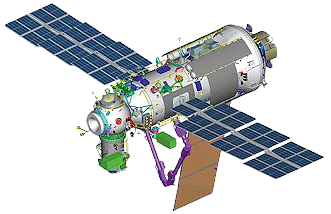 |
General |
|
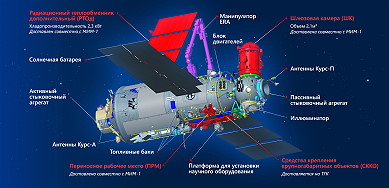 |
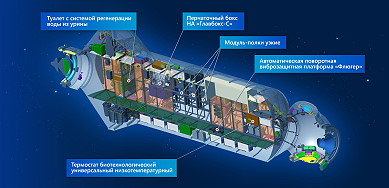 |
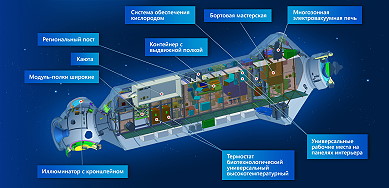 |
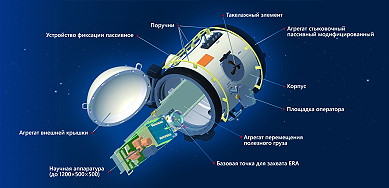 |
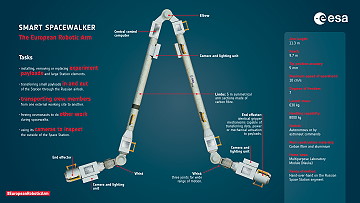 |
 |
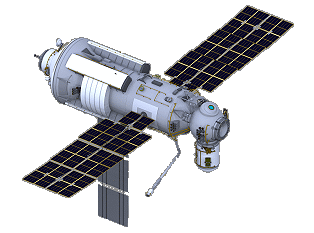 |
|
Integration |
|
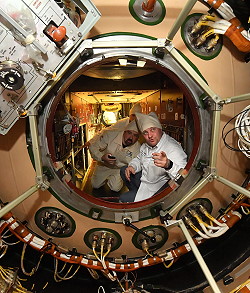 |
 |
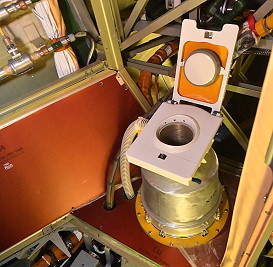 |
 |
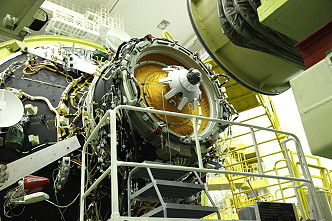 |
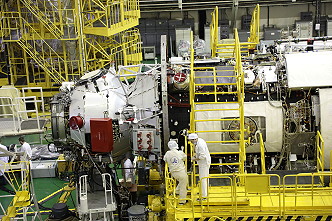 |
 |
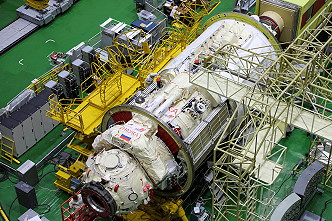 |
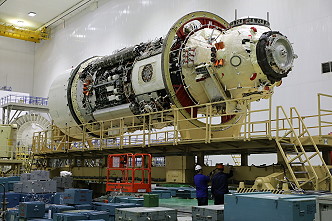 |
|
Rollout and launch |
|
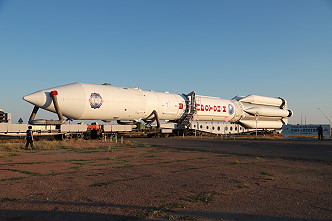 |
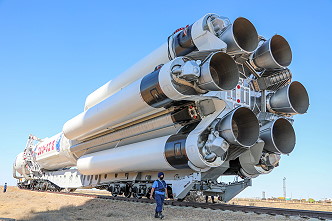 |
 |
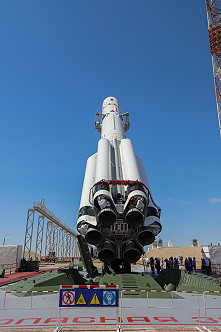 |
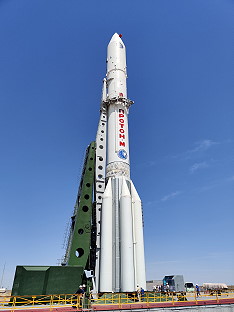 |
 |
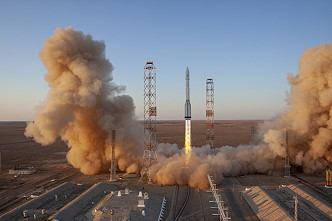 |
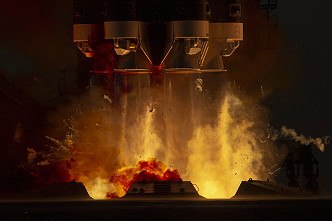 |
In orbit |
|
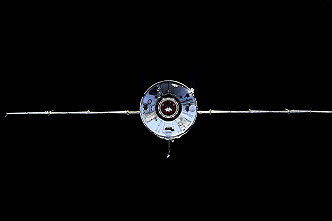 |
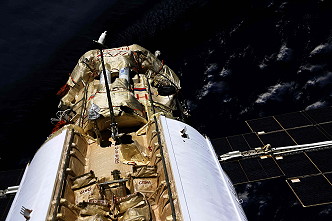 |
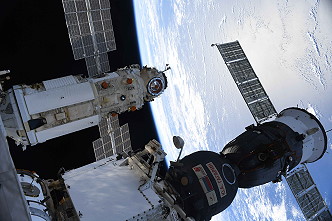 |
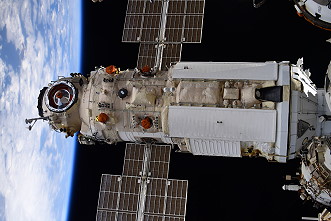 |
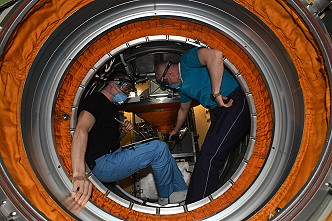 |
Photos
 |
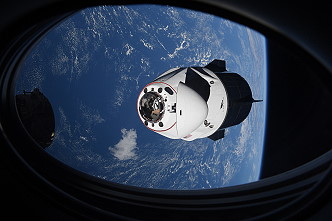 |
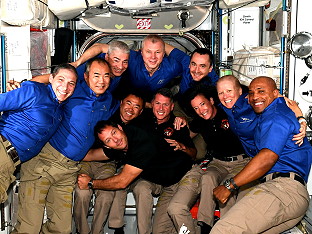 |
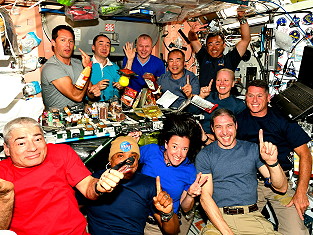 |
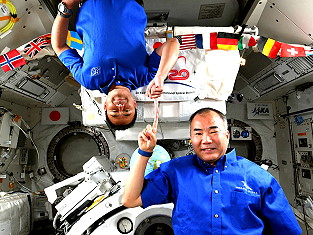 |
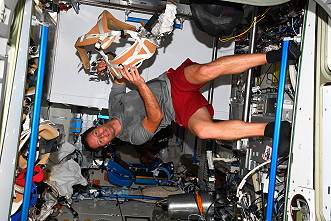 |
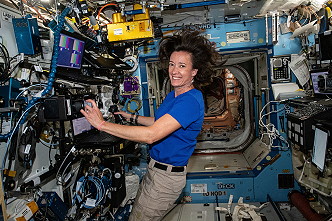 |
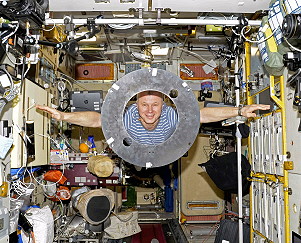 |
 |
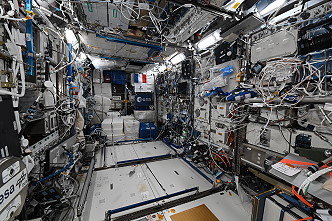 |
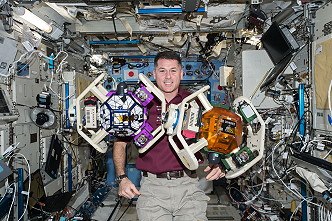 |
 |
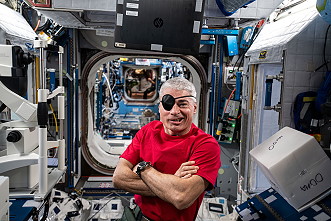 |
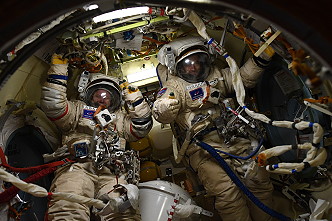 |
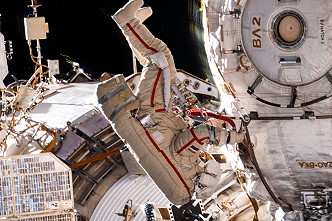 |
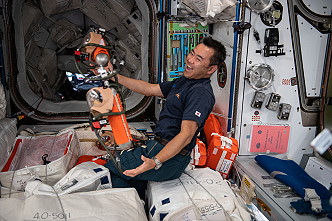 |
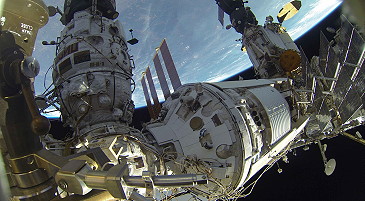 |
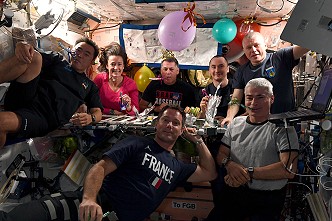 |
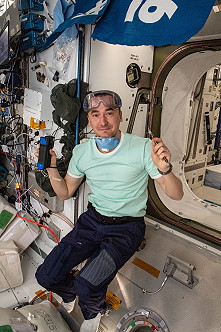 |
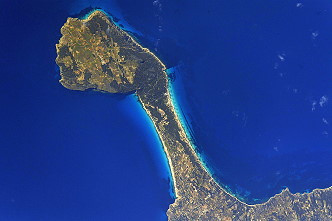 |
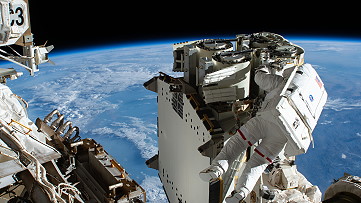 |
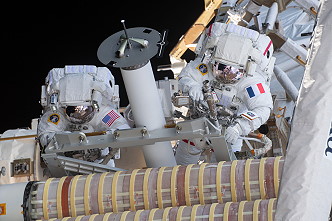 |
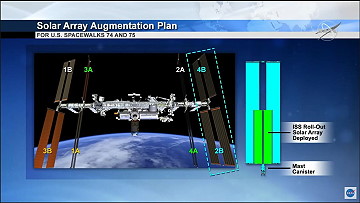 |
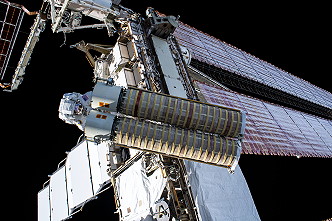 |
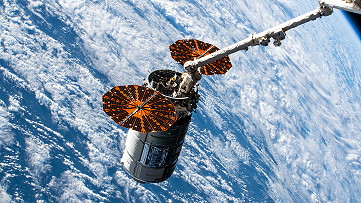 |
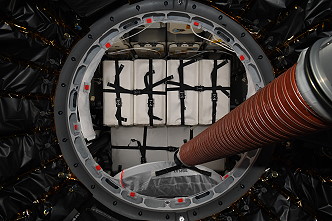 |
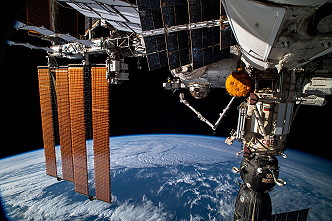 |
 |
 |
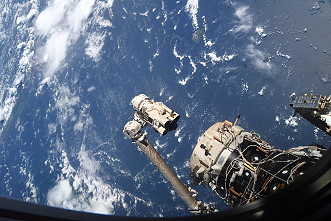 |
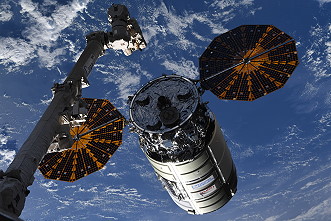 |
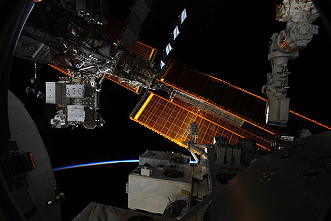 |
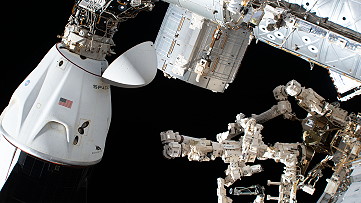 |
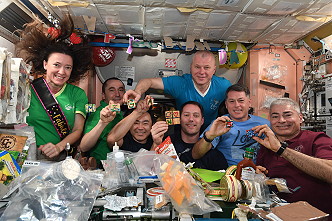 |
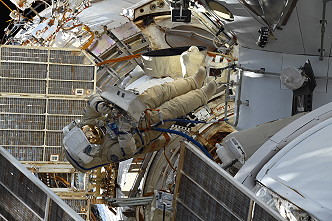 |
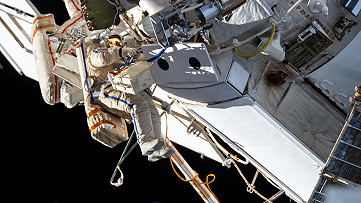 |
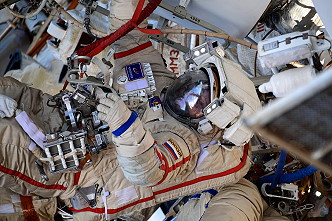 |
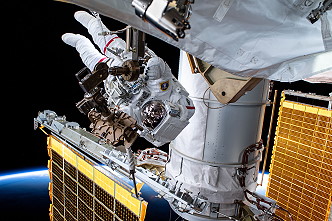 |
 |
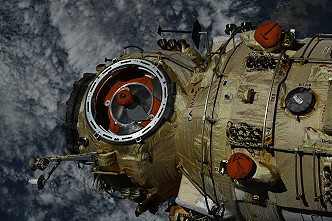 |
more Earth observation photos |
|
more onboard photos |
|
more EVA photos |
|
more night photos |
|
| © |  |
Last update on May 23, 2024.  |
 |